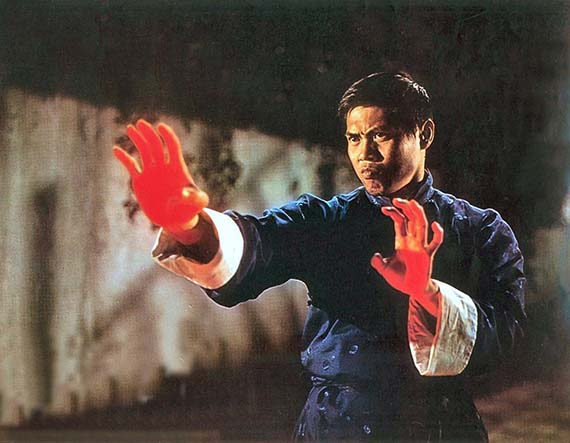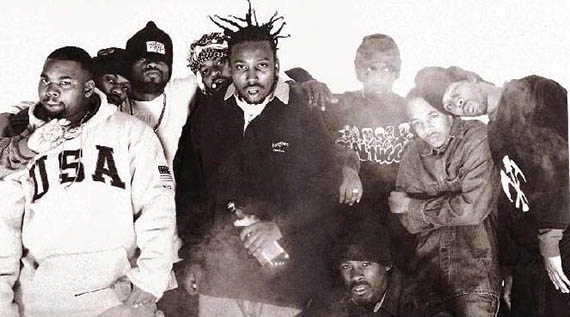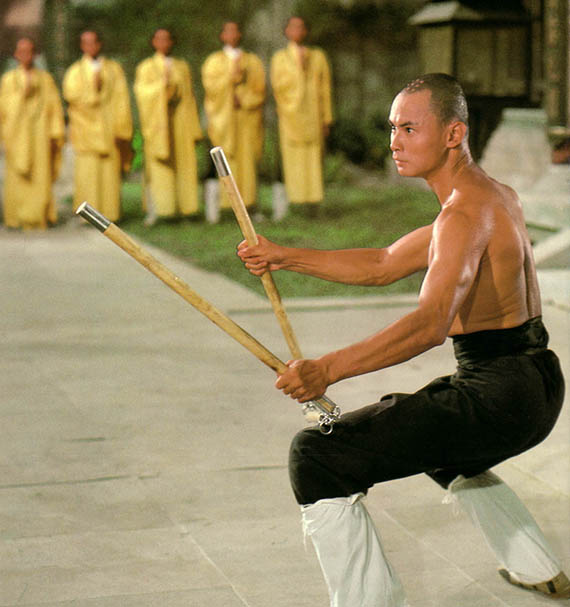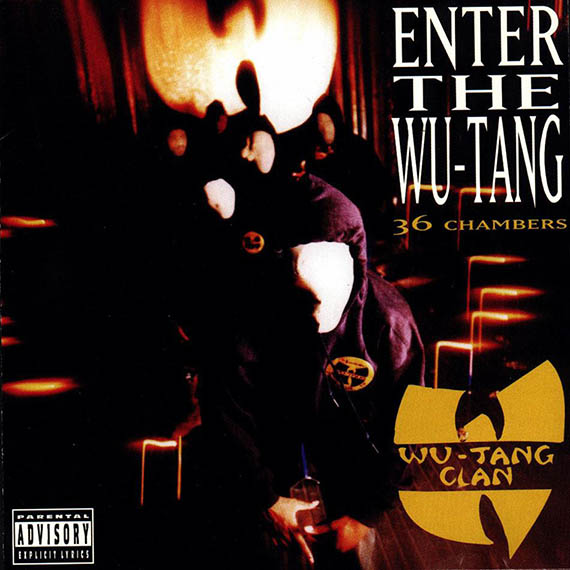
The Australian Cinémathèque’s ‘Action, Hong Kong Style’ program at GOMA in 2013 included a rare double feature of the two films that laid the foundation for one of the most original music groups to emerge in the last twenty years. The Five Venoms 1978 M and The 36th Chamber of Shaolin 1978 were crucial in the development of the Wu-Tang Clan’s unique aesthetic.

During the early 90s ascendancy of west coast g-funk, the sound epitomised by the L.A-sheen of Dr Dre’s The Chronic, the emergence from New York’s least celebrated borough of a chaotic group of nine ragtag rappers with a penchant for kung fu films seemed unlikely to have much impact on the world of hip hop, let alone the music industry and popular culture at large. Nevertheless, the Wu-Tang Clan forged a sound and a business model that would influence hip hop well into the new millennium, with a branding acumen that paved the paths to Jay Z’s imperial mind-state and the cult of Kanye West’s personality.
As well as tapping the common tropes of New York rap, the Wu’s murky aesthetic revelled in a fully-formed mythos that spliced mafia, chess and comic book references with a heavy dose of martial arts philosophy and imagery.
Hong Kong action cinema of the late 70s had a profound effect on a teenage Robert Diggs, later known as Clan producer, MC and mastermind, RZA. Trekking from his home, first in Brooklyn and later Staten Island, to the grindhouse theatres on Manhattan’s 42nd Street, he took in dubious imports like The Chinese Mack and Fists of the Double K which were tacked on to first-run American horror movies to create a double or triple feature.
His fascination with these films turned serious with The Five Venoms, the story of a cohort of masked disciples whose fighting styles each embodied a different creature: Centipede, Scorpion, Snake, Lizard, and Toad, and the obsession was cemented with the release of The 36th Chamber of Shaolin. Director Lau Kar-leung’s dedication to depicting genuine martial artistry resonated with Diggs, who would later be equally concerned with authenticity in hip hop. Gordon Liu played San Te, whose painstaking mastery of the existing thirty-five chambers of Shaolin ultimately led to his establishment of a thirty-sixth chamber which would spread the knowledge of Shaolin to the world.

As Diggs would tell Film Comment in 2008:
‘That one changed my life. It’s like a kung fu Rocky… I’ve never seen swords slashing like that before. It was through these films that I was able to see and feel from a non-Western point of view. Some of the dialogue struck a chord with me. It was Buddhism and psychology. “Without wisdom, there is no gain.” There’s beauty in that.’
These characters and plots, along with several others from the genre, shaped the Clan’s lyrical, sonic and visual palette. On the cover of their 1993 debut album, Enter the Wu-Tang (36 Chambers), masked clan members arise from the darkness of a candlelit dojo. Their home borough of Staten Island is rechristened Shaolin, and though RZA plunders well-used sample sources for his beats, once the kung fu atmosphere and the MCs’ high impact verbal acrobatics are added to the fray, the sum effect of Enter is an unprecedented kinetic menace.

The album is shot through with homage to Hong Kong cinema of all stripes, not least in one tense and hilarious conversational interlude in which a disgusted Raekwon berates Method Man for not taking better care of a borrowed VHS copy of John Woo’s The Killer. No doubt it was a valued commodity in the days before DVD and torrents. The Killer screens Sunday 6 October at 3.00pm and Wednesday 9 October at 8.00pm.
The sound of Enter was the sonic antithesis of Dre’s highly-polished synthesisers and replayed samples, and the low-fi methodology was all part of the effect as RZA explained, again to Film Comment:
‘When we made the first Wu-Tang album in 1993, we only had VHS and it was hard to hook up your equipment to get a good sample. Another great sample, from Five Deadly Venoms, was, “The Toad Style is immensely strong . . . it’s immune to any weapon. When properly used, it’s almost invincible” Those types of intro lines were perfect for my imagination and what I wanted to represent.’
Wu-Tang Clan | Da Mystery of Chessboxin’ (clean version)
What RZA wanted to represent was the largest and most versatile arsenal of rap styles ever amassed in a single group. Like the Venoms, each Clansman had a distinct style. Method Man’s charismatic growl, Ol’ Dirty Bastard’s drunken master lilt, GZA’s rocksteady punchline delivery, and Ghostface and Raekwon’s visceral narrative interplay were all parlayed into successful solo albums shortly after their group debut. RZA as sufi had used his studio as dojo to hone these styles. Speaking to Brian Coleman for the book Check the Technique, he likened the competitive sharpening of their verbal skills to kung fu training:
‘It’s like being in Shaolin, where the monks all train with each other. One monk may be nice and another monk may be nicer… It was like sharpening metal against metal.’
The Clan’s fortunes have varied over the past two decades, but even when faced with internal squabbles, critical ambivalence and creative missteps, they’ve remained unpredictable and unswervingly original. RZA’s savvy philosophy of building the group and taking its teachings to the world through the 36th Chamber, like San Te in the film, undoubtedly set the template for much of what followed in hip hop, a genre which continues to seep into popular culture at a broader level.


So, the work of Jonathan Saul Kane in his Depth Charge alias 4 years before W.T.C.’s debut album has been completely overlooked.
At the same time as running two record labels, Mr. Kane even had a licensing company called MADE IN HONG KONG which helped Tarantino catch up on the late 1970s movies which later inspired Kill Bill.
Pity the pioneers, for the populists always get the credit.
Wu Tang Clan ain’t nothing but copyists!
Hi. We’re not crediting Wu-Tang with being the first or only musicians to sample from these films. The interesting aspect of Hong Kong cinema’s influence on Wu-Tang is not so much the samples and lyrical references, but the philosophy that RZA had marinated on for 15 years, and how it informed his approach to masterminding the Clan. It seems most likely that RZA and Kane were aficionados of the same films, and each arrived separately at the decision to sample from them. Anyway, respect to J.S.K, no doubt a pioneer, for licensing these great films in the UK. Regards QAGOMA